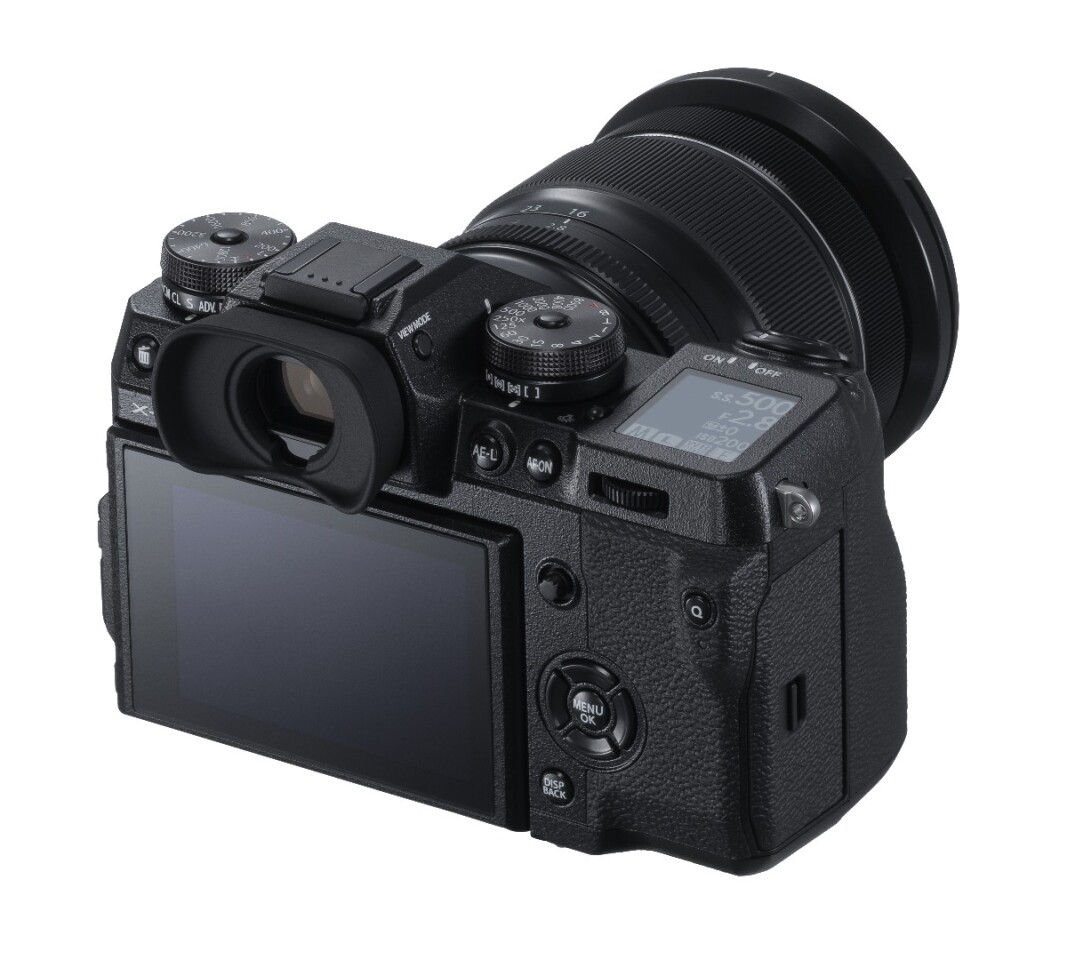Fujifilm has unveiled what it's calling its highest performance camera in its X Series range of mirrorless cameras. Building on the impressive feature set of 2016's X-T2 flagship, the X-H1 gains in-body image stabilization and advanced video recording features which are sure to please movie makers.
The most noticeable difference between the incoming model and the X-T2 is the former's size. The redesigned weather- and impact-resistant body has been given a large grip and bigger buttons (including a new AF-On button) for improved comfort, sure, but it's bigger all-around. Fujifilm says that the X-H1's magnesium body is 25 percent thicker than the X-T2 – giving it body-only dimensions of 139.8 x 97.3 x 85.5 mm (5.5 x 3.8 x 3.36 in) and tipping the scales at 673 g (23.7 oz), including a memory card and battery.

Inside, there's a 24.3 megapixel APS-C (23.5 x 15.6 mm) X-Trans CMOS III sensor paired with an X-Processor Pro image processing engine, for a standard ISO sensitivity of 200 to 12,800 (which can be expanded down to 100 and up to 51,200), and 14 frames per second continuous shooting using the electronic shutter, or 8 fps from the mechanical shutter.
The X-H1 is reported to be the first X Series model to be treated to in-body (sensor shift) image stabilization, which makes use of three accelerometers, three gyros and a dual-processor for 5-axis stabilization of up to 5.5 stops (with certain lenses). Micro vibrations caused by the mechanical shutter should also be reduced thanks to the addition of a spring mechanism, though photographers also have the option to use electronic shutters to all-but eliminate such vibrations.
On the video front, the new X Series camera is capable of 4K/30p (3,840 x 2,160) video recording at up to 200 Mbps – twice the bit rate of the X-T2. The X-H1 can also record wider aspect DCI 4K videos at 24p and 23.98p, and Fujifilm has included a cinematic film emulation mode for movie-makers not wanting to carry around a huge shoulder-cam. Other key features include about 12 stops of dynamic range on tap, 120 fps high slow motion recording at Full HD and a 24-bit/48 kHz internal microphone.

Elsewhere, there's a hybrid contrast/phase detection autofocus system, with Fujifilm noting that the phase detection AF has been improved for low light photography, a new Flicker Reduction mode to ensure stable exposure during continuous shooting under fluorescent and mercury lighting, and a minimum aperture increase from F8 to F11. The camera's electronic viewfinder has been improved, too, now shaping up as a 0.5 inch, 3.69 million dot OLED viewfinder with 0.005 second display lag and a frame rate of 100 fps.
The 3-inch 1.04 million dot touchscreen display panel can be tilted in three directions, there's a DSLR-like LCD display to the top for checking settings and integrated Bluetooth 4.0 and Wi-Fi cater for wireless file transfer and remote operation. Finally, up to 310 frames or 35 minutes of 4K video recording can be had per charge of the included Li-ion battery.
The Fujifilm X-H1 is due for release on March 1 for a body-only price of US$1,899.95. The addition of an optional battery grip gives users up to 900 stills or about 30 minutes of 4K recording before needing a top up. The promo video below introduces the new camera.
Product page: X-H1








